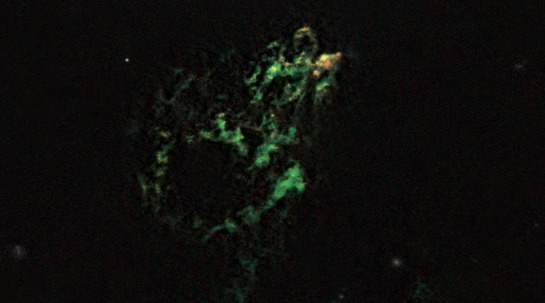We're open daily this holiday! View holiday hours
Science News
It's a Zoo Out There...
October 14, 2013
by Josh Roberts

Grad students of the world, rejoice!
No longer will graduate students be chained to desks in dank basements of research facilities, combing through massive data or sorting and classifying hundreds of images all while downing cup after cup of cold coffee. A huge step forward in the way science happens promises to release them from scientific bondage.
Galaxy Zoo allows citizen scientists to use their home computers to review astronomical images of galaxies and categorize them by shape and observed features. Computers are experts at determining the brightness and color of these distant groupings of stars, but they are unable to reliably determine the structure of the galaxies. Enter the incredible human brain!
With a little bit of training, anyone can plop themselves down in front of a computer and sort out a few galaxies. However, this raises a challenge as well.
Anyone who has visited the comments sections of various websites knows that there are people who revel in the anonymity of the internet and might contribute intentionally faulty data for their own amusement. In order to ensure accuracy, every assessment is independently reviewed many times. This has another potential benefit as well: as multiple users review the same images, they have the chance to discuss what they see and seek out anything that might warrant further attention.
Humans can also pick out the odd or curious parts of a picture. Some of the discoveries, such as Hanny’s Voorwerp, would never have been found by a computer, but Galaxy Zoo enabled a Dutch school teacher to make her own significant contribution to the field of galactic morphology!
The importance of citizen science projects extends beyond astronomy. Many labs and facilities are figuring out ways to tap into the incredible resource that is human beings. Allowing passionate amateurs to find a way to make their own contributions to whatever field they care most about is really powerful. Here at the Academy, we encourage our visitors and guests to contribute to our research as well. By documenting life around us with iNaturalist and going out and BioBlitzing sites such as Mount Tamalpais and Pillar Point, everyone has a chance to look, to find, and to answer their own questions. Or maybe come up with some new ones—and what is more scientific than that?
So, here’s to the over 150,000 people who have expanded our knowledge of the galaxies and the Universe around us! Take a page from their book and find a project of your own to which you can contribute.
You’ll earn the gratitude of graduate students everywhere…
Image (Hanny's Voorwerp): NASA, ESA, W. Keel (University of Alabama), and the Galaxy Zoo Team
Josh Roberts is a program presenter and astronomer at the California Academy of Sciences. He also contributes content to Morrison Planetarium productions.